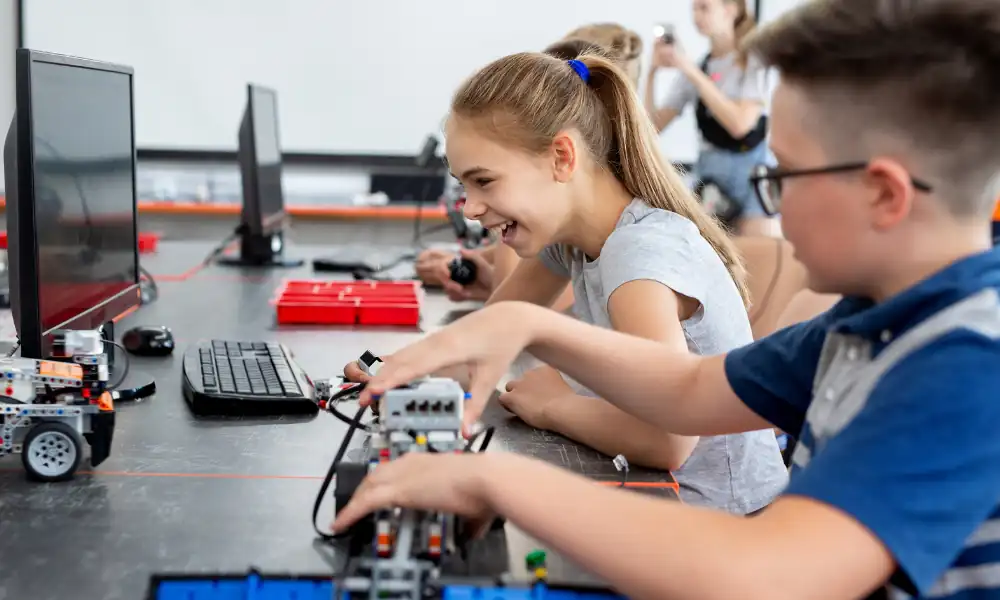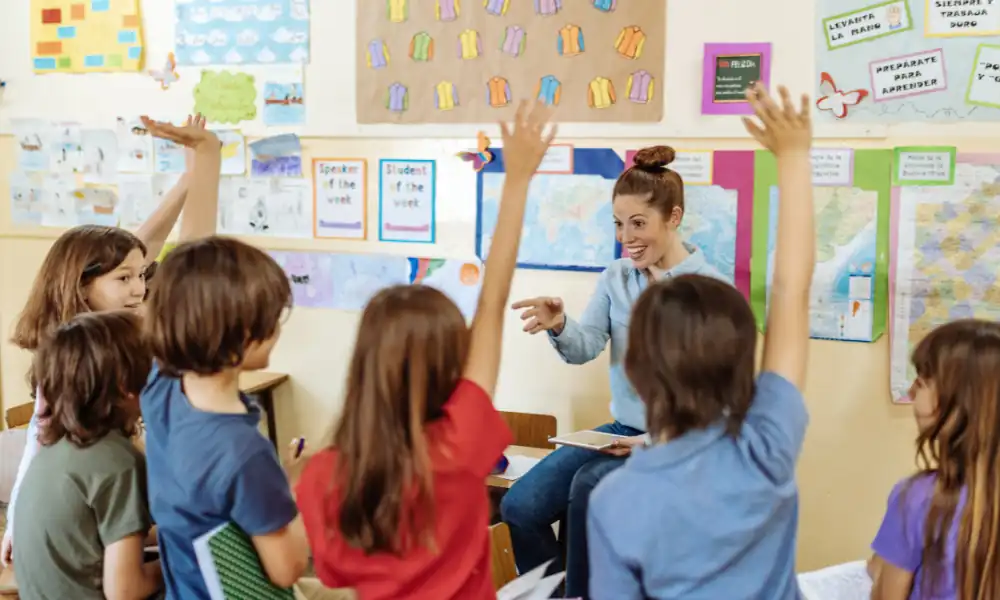We have all experienced the traditional classroom. Attend classes, absorb content, and tackle assignments at home. It’s the conventional teaching model that has been the norm for years. But what if there was a new way of approaching education? The concept of the flipped classroom represents a pedagogical shift that redefines the conventional teaching model. In this framework, students are encouraged to engage with instructional materials in the comfort of their homes, often through pre-recorded lectures or assigned readings. This pre-class exposure to content encourages independent learning and allows individuals to progress at their own pace. Class time then transforms into a dynamic arena for interactive and hands-on activities, facilitated discussions, and collaborative problem-solving. Transitioning from a teacher-centered sphere to a student-centered one, the flipped classroom permits learners to take ownership of their educational journey. The inversion of traditional roles enhances the overall educational experience by promoting critical thinking and a deeper understanding of the subject matter.
Teachers as Facilitators
Within a flipped classroom, the role of teachers undergoes a transformative shift, evolving into that of facilitators and mentors. Traditionally perceived as knowledge providers in a didactic setting, educators in a flipped classroom become orchestrators of interactive learning experiences. Rather than delivering content in a one-way fashion, teachers guide students through application-based activities, thus using class time for collaborative exploration. They provide instructional materials for home-based consumption in the form of pre-recorded lectures, live online lectures, or assigned readings. These resources serve as a foundation upon which students build, and teachers then facilitate the amalgamation of this knowledge during in-person sessions.
As facilitators, teachers encourage critical thinking by posing thought-provoking questions. As a result, students can engage in discussions and analyze real-world scenarios. The emphasis on application over mere memorization transforms the classroom into a vibrant hub of intellectual exchange. The teacher, once the primary source of information, now becomes a mentor. They guide learners through the process of knowledge application and encourage them to become active participants in their educational journey.

Dynamic In-Person Engagement
Students, having acquired foundational knowledge independently, converge in the classroom for a collective exploration of concepts. Active learning can now take center stage. Students are immersed in practical applications of the pre-learned material. This dynamic engagement reinforces theoretical concepts and cultivates critical thinking skills as students grapple with real-world scenarios.
Transitioning from a lecture-centric approach, the flipped classroom allows for a diverse range of learning activities. Through collaborative projects, students deepen their understanding of the subject matter in addition to developing essential teamwork and communication skills. Problem-solving exercises stimulate cognitive agility, encouraging students to apply theoretical knowledge to practical challenges. The teacher facilitates discussions that encourage students to share, debate, and refine ideas, creating a community of learning.
EdTech Tools Driving Flipped Learning
The implementation of integrated Student Information Systems (SIS) and Learning Management Systems (LMS) are fundamental in propelling the success of flipped classrooms. Active participation is stimulated as students can access instructional materials such as pre-recorded lectures and supplementary resources through the LMS. With the integration of SIS, students can track their progress, review assignments, and manage their schedules seamlessly. The SIS component provides a comprehensive overview of a student’s academic profile, promoting a holistic understanding of individual progress.
Students are now armed with the tools to manage their educational journey, transcending the traditional boundaries of learning. This makes the classroom just one facet of a broader, technology-enabled educational experience.

Overcoming Challenges for the Flipped Classroom
Establishing flipped classrooms presents a spectrum of challenges despite looking promising for enhanced learning. Each challenge needs to be assessed appropriately and cautiously in order to be solved. Some include:
- The creation of engaging and effective digital content requires new instructional design skills and proficiency in multimedia development. This includes pre-recorded lectures and interactive materials. Professional development opportunities need to be provided to enhance educators’ instructional design skills and multimedia content creation.
- Ensuring equitable access to digital resources poses a challenge. These include variations in students’ technological capabilities and internet connectivity. This can be overcome by employing strategies such as providing loaner devices, creating offline alternatives, and flexible access to digital resources.
- The restructuring of class time and dynamics requires meticulous planning and coordination. As educators transition to facilitators, they need to guide students through application-based activities during in-person sessions. Comprehensive training would need to be offered to educators on facilitating active learning, and gradually introducing the flipped model.
- Seamlessly integrating technology into the curriculum can pose institutional resistance. This requires collaboration with IT departments to address infrastructure challenges, provide ongoing tech support, and create a culture that embraces technological innovation.
- Assessing student understanding of pre-class materials and gauging the effectiveness of in-class activities require innovative assessment strategies beyond traditional examination formats. Educators need to explore alternative assessment approaches such as project-based assessments, reflective journals, and peer evaluations to align with the active and collaborative nature of the flipped classroom model.
The Potential of the Flipped Classroom
The prospects of the flipped classroom in teaching and learning appear promising as it demonstrates effectiveness in a more student-centric environment. By shifting the focus from passive information absorption to active engagement during class time, this innovative method of learning encourages critical thinking, collaboration, and problem-solving skills. The flexibility offered by the flipped classroom accommodates diverse learning styles, allowing students to progress at their own pace. As technology evolves, the accessibility and sophistication of educational tools supporting the flipped model are likely to increase, further enhancing its effectiveness.
Furthermore, the flipped classroom aligns with the demands of a rapidly changing world, where adaptability and practical skills are crucial. Students would be equipped with a foundation of independent learning and analytical thinking promoted by the flipped model. This ensures that they are better prepared for future challenges and are able to contribute meaningfully to the world as innovative problem solvers.
FAQ’s
A flipped classroom reverses the traditional teaching model, where students engage with instructional materials at home and use class time for interactive activities.
Yes. Classter provides integrated Student Information Systems (SIS) and Learning Management Systems (LMS) that facilitate access to instructional materials, track student progress, and promote active participation in flipped learning environments.
Classter offers comprehensive training and support for educators on facilitating active learning, integrating technology into the curriculum, and gradually introducing the flipped classroom model.

